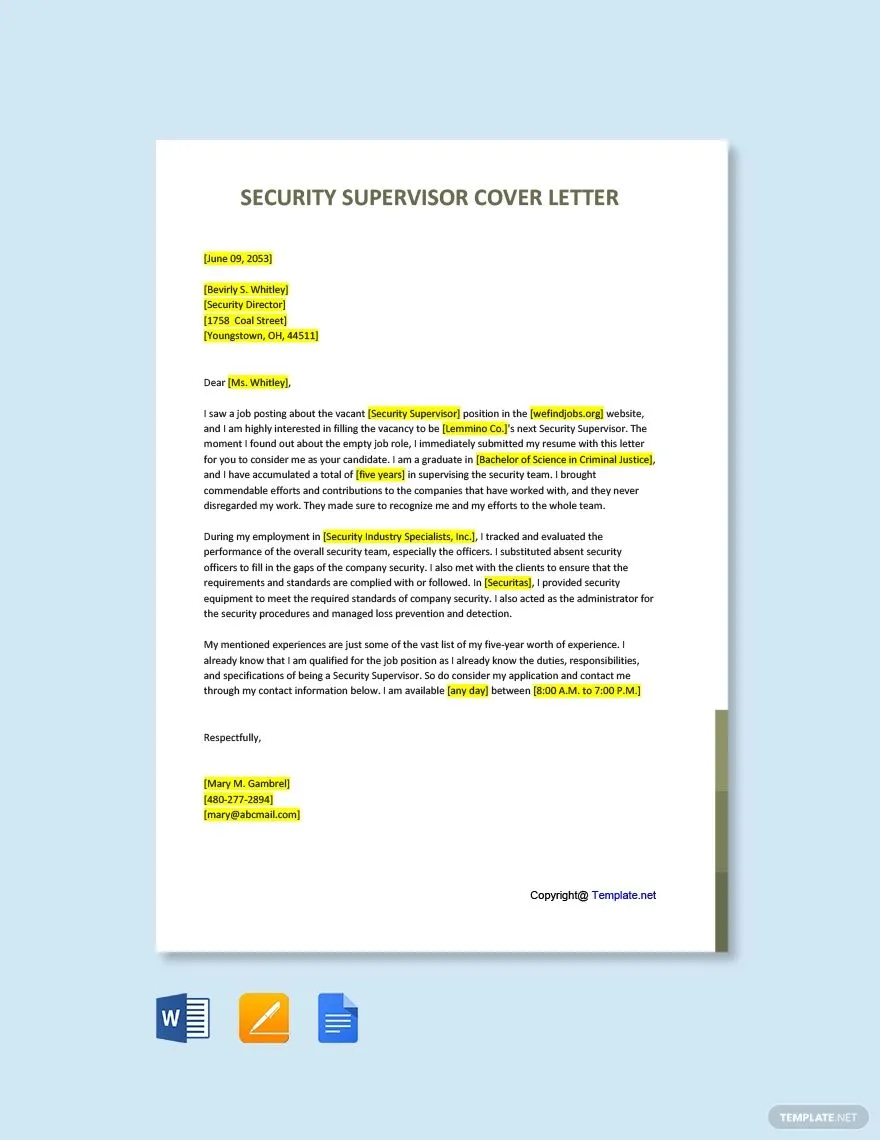Crafting Your Director of Security Cover Letter
A well-crafted cover letter is your first opportunity to make a strong impression on a potential employer. For a Director of Security position, where attention to detail and professionalism are paramount, your cover letter is even more crucial. It’s not just a formality; it’s a chance to showcase your expertise, highlight your accomplishments, and demonstrate why you’re the ideal candidate for the role. This guide will provide you with the essential steps and insights to write a compelling Director of Security cover letter that grabs the reader’s attention and gets you noticed. From understanding the role and researching the company to showcasing your key skills and achievements, we’ll cover everything you need to know to create a standout cover letter.
Understanding the Role and Requirements
Before you start writing, it’s vital to fully grasp the responsibilities of a Director of Security. This role typically involves overseeing all aspects of security operations, including developing and implementing security policies, managing security personnel, and ensuring the safety and protection of assets, employees, and visitors. Key requirements often include a strong background in law enforcement, military service, or corporate security, along with experience in risk assessment, emergency management, and security technology. Familiarize yourself with the specific requirements outlined in the job description, as this will guide you in tailoring your cover letter to address the employer’s needs and expectations. Understanding the role thoroughly helps you align your skills and experience effectively.
Researching the Company and Its Needs
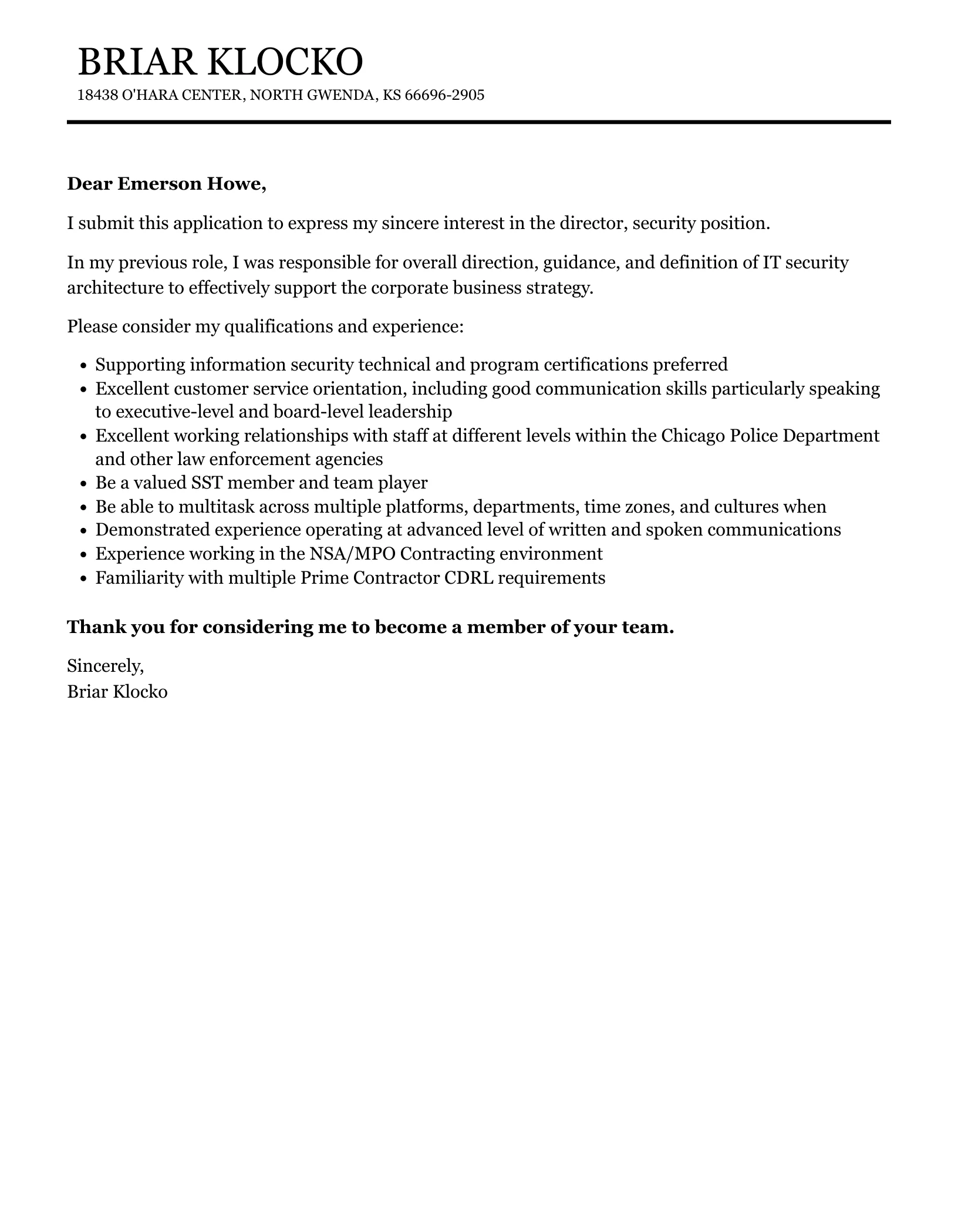
A generic cover letter won’t cut it. To truly impress, you need to research the company to which you’re applying. Visit their website, read their mission statement, and explore their recent news and press releases. Identify the company’s security challenges and how your skills and experience can address them. Tailor your cover letter to highlight how you can contribute to their specific needs. Mentioning the company by name and demonstrating your understanding of their business shows that you’ve taken the time to learn about them. This shows your genuine interest in the position. Consider the company’s size, industry, and any unique security concerns they might have. This targeted approach sets you apart from other applicants who send out generic letters.
Highlighting Your Relevant Skills and Experience
Your cover letter should be a showcase of your most relevant skills and experience. Focus on the areas that directly align with the job description. For a Director of Security role, this means emphasizing your leadership capabilities, risk assessment expertise, and experience in managing security teams. Provide specific examples of how you have successfully implemented security protocols, managed crisis situations, and improved security measures in previous roles. Quantify your achievements whenever possible. Use numbers and statistics to demonstrate the impact of your work, such as reducing incidents, improving response times, or enhancing security effectiveness. This makes your claims more credible and memorable.
Key Skills for a Director of Security
A successful Director of Security needs a diverse skill set to manage all aspects of security operations. Your cover letter should highlight these key skills, supported by specific examples. Here are some of the most important skills to emphasize. Remember to showcase your proficiency in these areas. Your ability to demonstrate competence in these skills will greatly increase your chances of landing an interview.
Leadership and Management
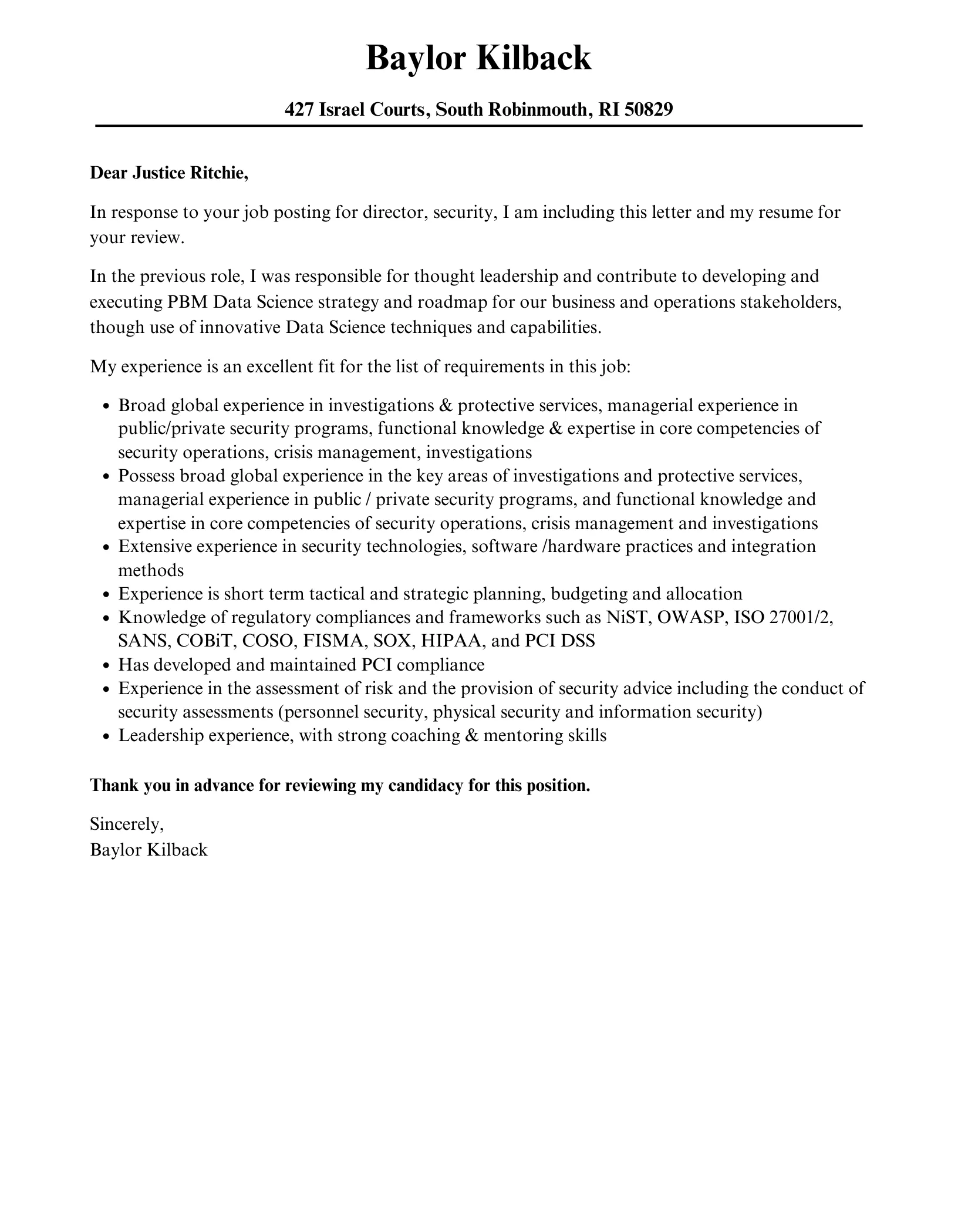
Demonstrate your ability to lead and manage security teams effectively. Provide examples of how you have trained, mentored, and motivated security personnel. Highlight your experience in developing and implementing security policies and procedures. Emphasize your skills in conflict resolution, team building, and creating a positive work environment. Your leadership qualities are critical in ensuring the smooth operation of security programs.
Risk Assessment and Mitigation
Showcase your expertise in identifying, assessing, and mitigating security risks. Describe your experience in conducting vulnerability assessments, developing risk management plans, and implementing security measures to protect assets and personnel. Detail how you have used risk assessment methodologies to improve security posture. Highlight your experience with security technologies and protocols.
Emergency Response and Planning
Illustrate your ability to develop and implement emergency response plans. Provide examples of how you have managed crisis situations, coordinated emergency drills, and ensured the safety of personnel during emergencies. Detail your experience in working with first responders and emergency services. Show your proficiency in creating and executing effective emergency plans.
Compliance and Regulations
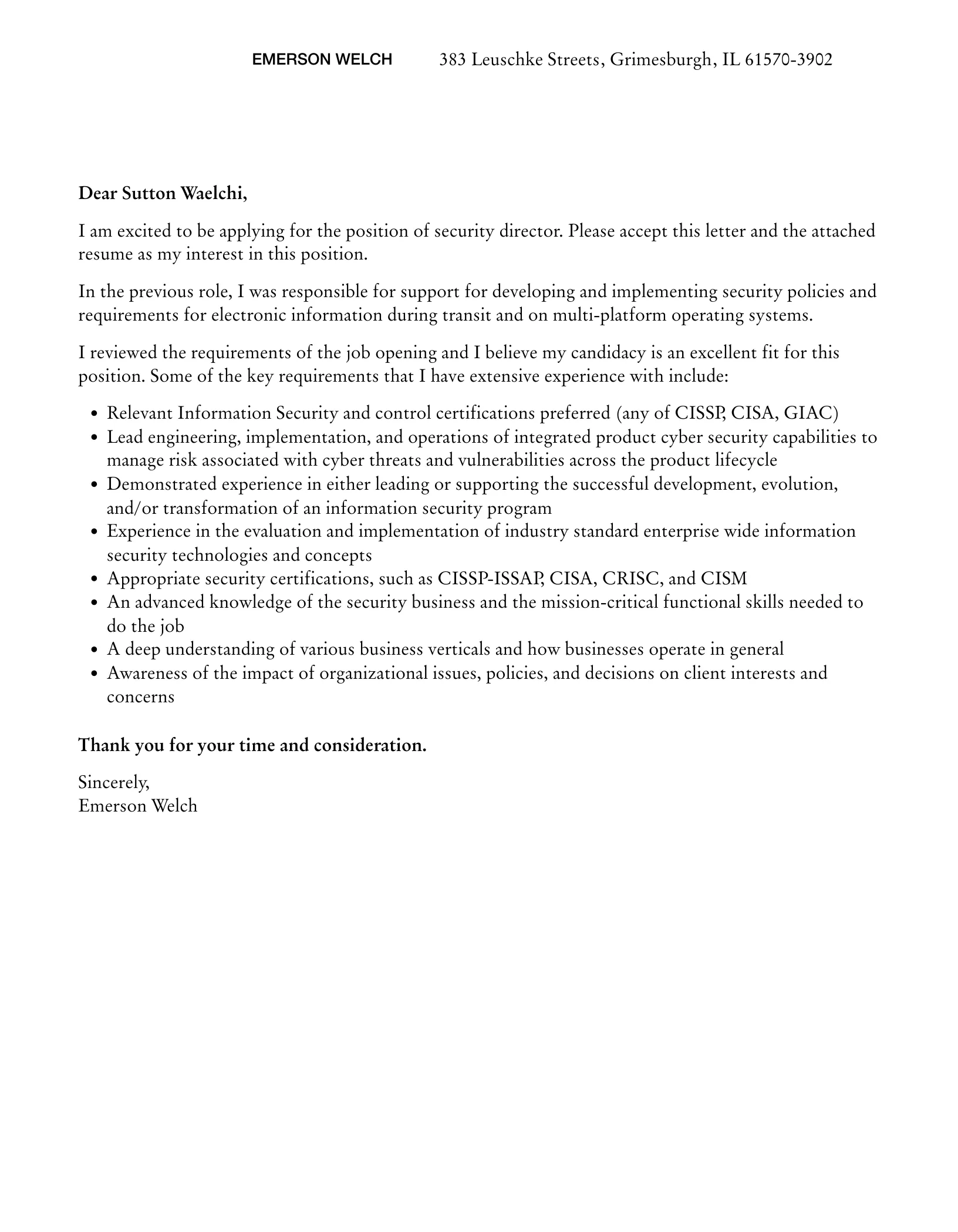
Highlight your knowledge of relevant laws, regulations, and industry standards. Demonstrate your ability to ensure compliance with security protocols and legal requirements. Show your experience in conducting security audits, preparing reports, and maintaining accurate records. Emphasize your attention to detail and adherence to compliance standards.
Tailoring Your Cover Letter
Customize your cover letter for each job application. Avoid using a generic template. Instead, carefully review the job description and identify the key requirements. Tailor your cover letter to address these specific needs. Use the company’s name and refer to their specific security challenges. This shows that you have taken the time to understand the company. Mention specific projects or initiatives that align with the company’s goals. This targeted approach will make your cover letter more compelling. Demonstrate that you are genuinely interested in the specific role.
Structuring Your Cover Letter
A well-structured cover letter is easy to read and highlights your most important qualifications. The structure of your cover letter is very important. Use a clear and concise format to make a positive impression. A well-organized letter demonstrates professionalism. Each section of your cover letter should have a specific purpose.
Opening Paragraph
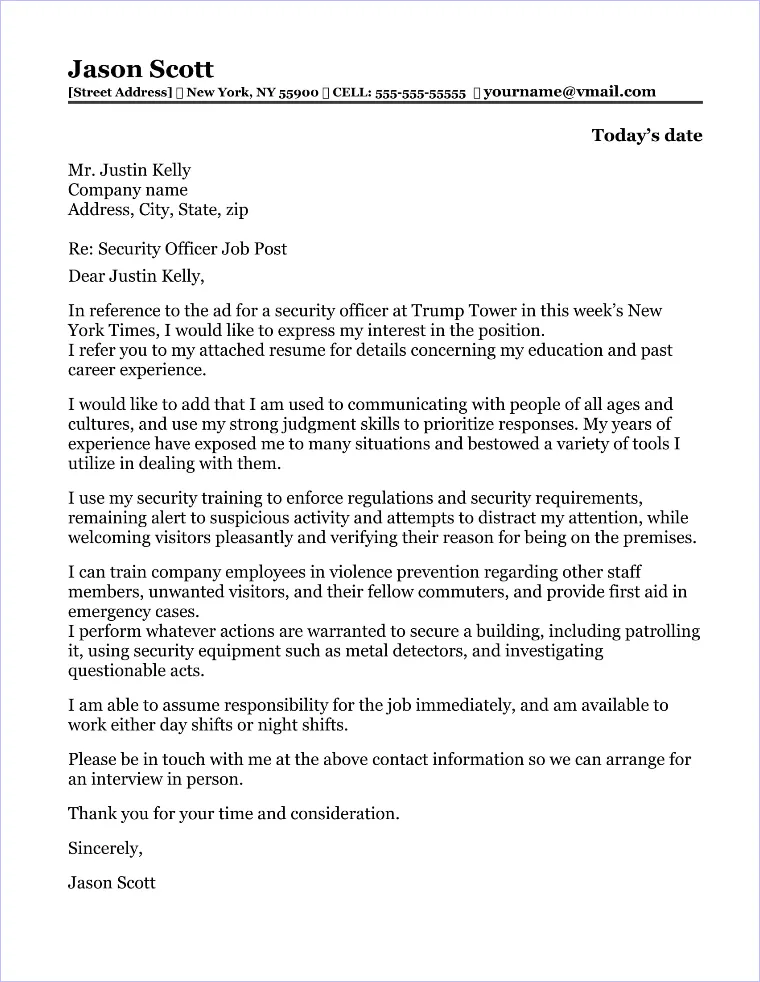
Start with a strong opening that grabs the reader’s attention. State the position you are applying for and how you learned about the opportunity. Briefly mention your most relevant qualifications and express your enthusiasm for the role and the company. Make a strong first impression by immediately showcasing your interest.
Body Paragraphs
The body paragraphs should provide detailed information about your skills, experience, and achievements. Use each paragraph to address a specific area of the job description and highlight relevant examples. Support your claims with quantifiable results and specific examples. Focus on demonstrating your qualifications and addressing the employer’s needs. Keep the tone professional and engaging throughout.
Closing Paragraph
In your closing paragraph, reiterate your interest in the position and summarize your key qualifications. Thank the employer for their time and consideration. Include a call to action, such as inviting them to contact you for an interview. End on a positive note, emphasizing your enthusiasm for the opportunity. Conclude by expressing your availability and willingness to discuss your qualifications further.
Showcasing Achievements and Quantifiable Results
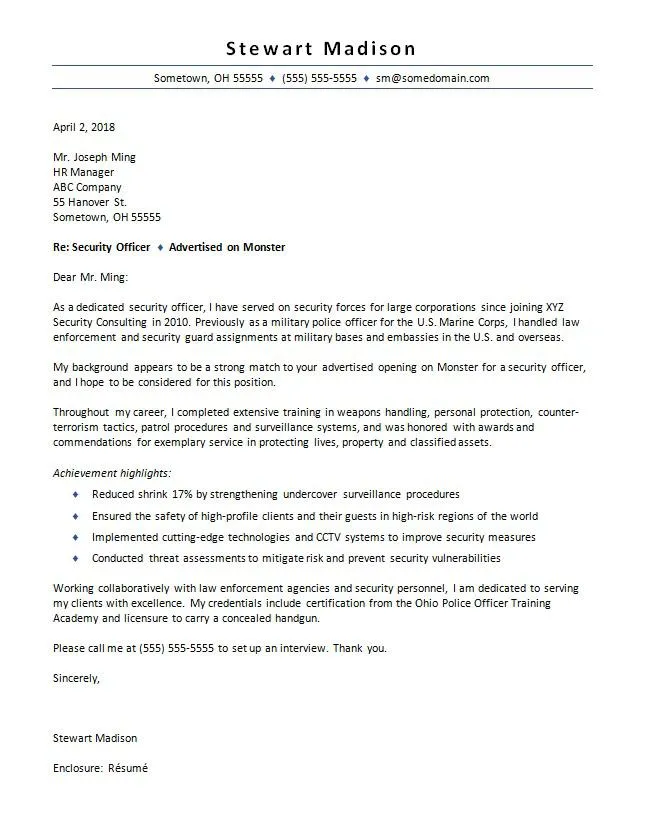
Instead of simply listing your responsibilities, focus on showcasing your achievements. Use quantifiable results to demonstrate the impact of your work. For example, mention how you reduced security incidents by a certain percentage, improved response times, or enhanced the effectiveness of security protocols. Use numbers and statistics to support your claims and make them more compelling. Quantifiable results will make your achievements memorable and highlight your value. This will set you apart from other candidates.
Using Action Verbs to Impress
Action verbs make your cover letter more dynamic and engaging. Start each sentence with a strong action verb to describe your accomplishments and responsibilities. Use words like “managed,” “implemented,” “developed,” “led,” “achieved,” and “improved” to highlight your skills and accomplishments. This will make your cover letter more compelling and demonstrate your abilities. Action verbs will make your experience seem more impactful. This approach will help you to make a strong impression.
Providing Specific Examples of Your Accomplishments
Don’t just say you have experience in a certain area; provide specific examples of what you have achieved. For instance, instead of saying, “Managed security operations,” say, “Managed a team of 50 security personnel, resulting in a 15% reduction in security breaches.” Use the STAR method (Situation, Task, Action, Result) to structure your examples, providing a clear context, your role, your actions, and the positive outcome. Specific examples make your claims more credible and demonstrate your skills. This approach showcases your competence and value.
Proofreading and Editing Your Cover Letter
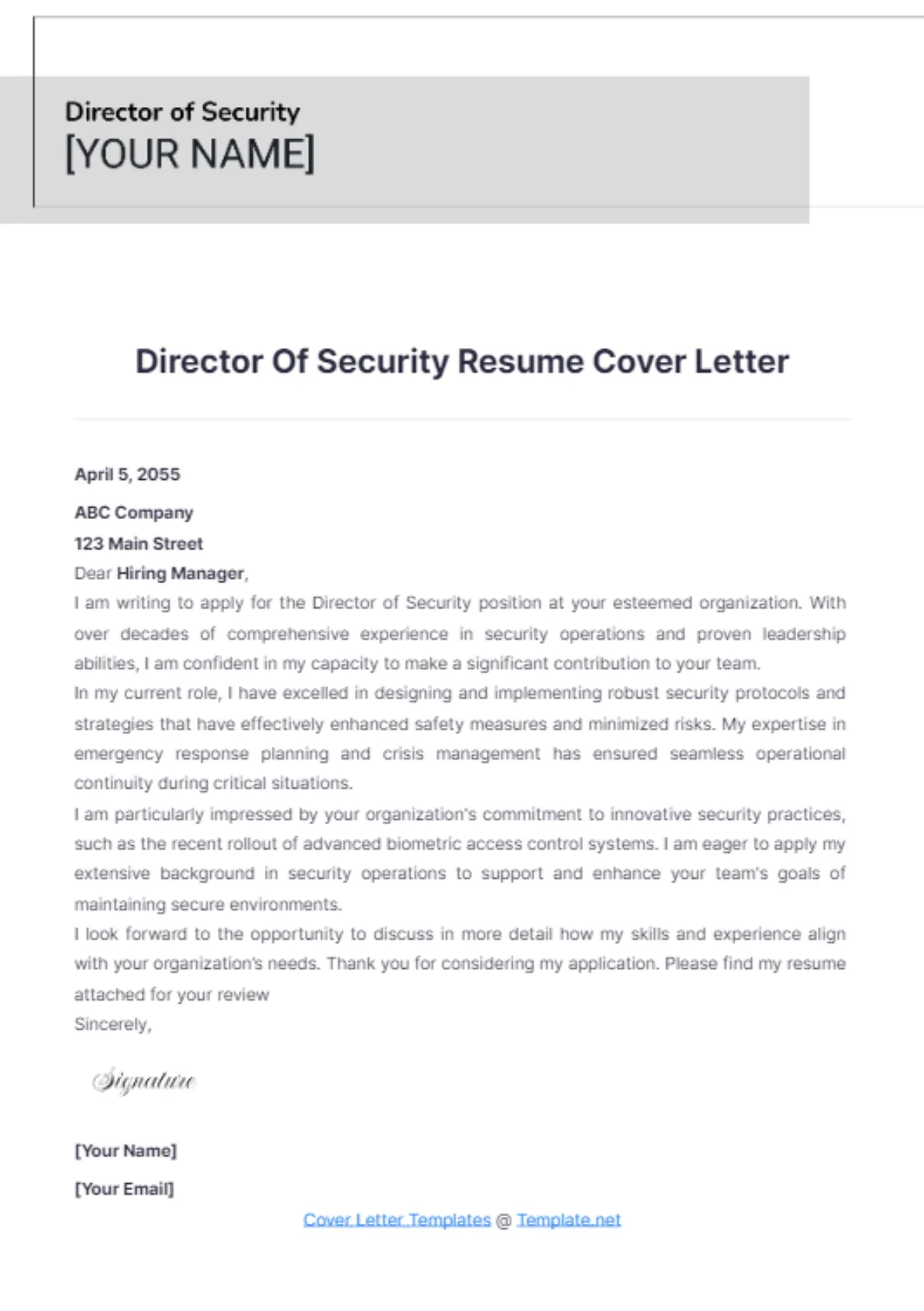
Before submitting your cover letter, proofread it carefully for any errors in grammar, spelling, and punctuation. Typos and grammatical errors can create a negative impression and make you appear unprofessional. Use a grammar checker and have someone else review your letter to catch any mistakes you may have missed. Ensure your cover letter is polished and error-free. A well-edited cover letter demonstrates your attention to detail. Always ensure your letter is professional and reflects well on you.
Ensuring a Polished and Professional Document
Your cover letter should be formatted professionally. Use a clean and easy-to-read font, such as Times New Roman or Arial. Keep the font size between 10 and 12 points. Use a consistent format throughout the document. Use appropriate spacing and margins. Make sure the document is visually appealing and easy to read. A polished cover letter demonstrates your professionalism and attention to detail. A well-formatted document makes a positive impression.
Common Mistakes to Avoid
Avoid common mistakes that can undermine your application. Do not use a generic cover letter. Avoid grammatical errors and typos. Do not include irrelevant information. Avoid being overly wordy. Do not focus solely on your responsibilities; highlight your achievements. Avoid negative language. Do not use clichés. Being mindful of these mistakes will help you create a more effective cover letter. Pay attention to these points to improve your chances of success.
Formatting and Design Tips
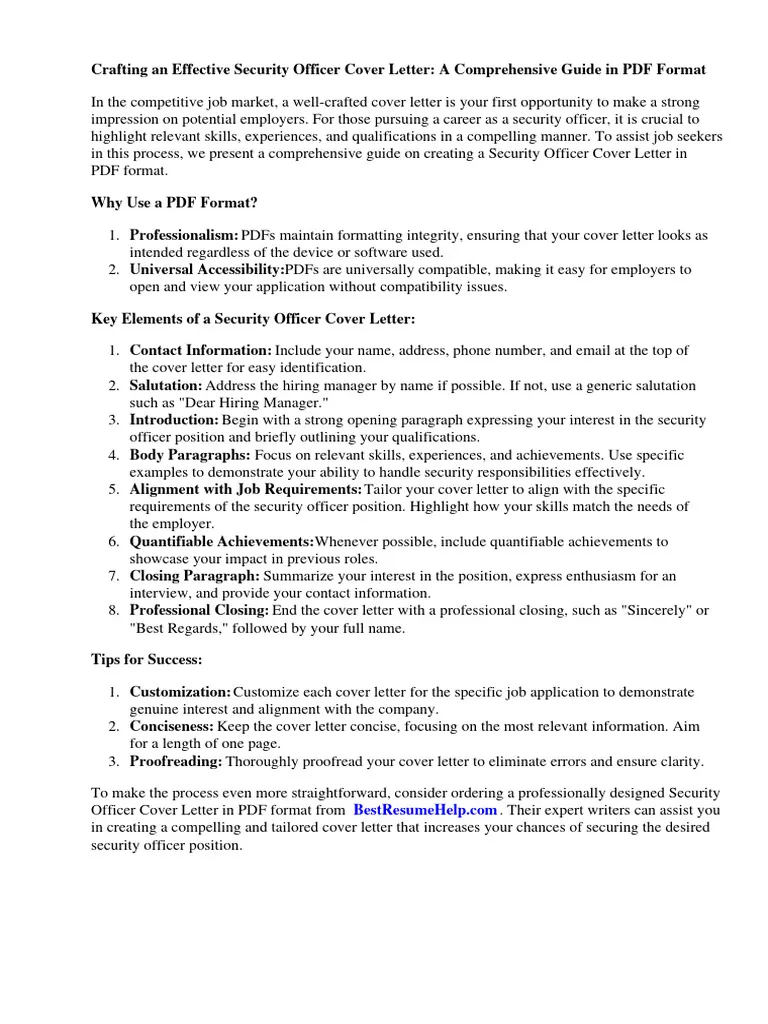
Use a professional and easy-to-read font. Keep the font size between 10 and 12 points. Use a consistent format throughout the document. Include your contact information at the top. Use clear headings and subheadings to organize your content. Keep paragraphs concise and to the point. Ensure a balanced layout with appropriate margins and spacing. Use bullet points to list your achievements and skills. Make sure the formatting is consistent throughout the document. This will make your letter more visually appealing.
